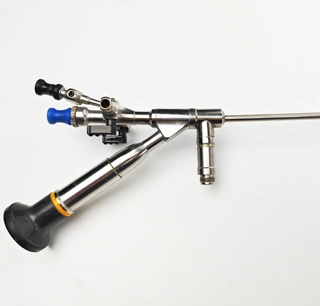Tel: +86-19906868508
E-mail: info@sihanmed.com
Tel: +86-19906868508
E-mail: info@sihanmed.com
Rigid endoscopy involves the use of a straight, inflexible tube to examine specific areas of the body. This type of endoscope is typically made of metal and is used in procedures where a straight path to the target area is available. Common applications include examining the ear, nose, throat, and certain parts of the urinary and reproductive systems. Rigid endoscopes provide high-quality images due to their stable structure. However, they can be uncomfortable for patients and are not suitable for examining areas that require navigation through curves or bends.

Flexible endoscopy uses a bendable, tube-like instrument that can navigate through the body’s natural curves and bends. This type of endoscope is often made of flexible plastic and contains fiber optics or a tiny camera to transmit images. Flexible endoscopy is commonly used for gastrointestinal procedures, such as colonoscopies and gastroscopies, as well as bronchoscopies to examine the lungs. The flexibility of the endoscope medical instrument allows for a more comfortable experience for the patient. Additionally, it can reach areas that rigid endoscopes cannot, making it a versatile tool in medical diagnostics.
One of the main advantages of rigid endoscopy is the high-quality, clear images it provides. The rigid structure allows for precise control and stability during the procedure. This type of endoscopy such as Olympus rigid endoscope is also generally quicker and can be more cost-effective due to the simplicity of the equipment. Rigid endoscopes are easier to sterilize, reducing the risk of infection. They are particularly useful in surgical procedures where precision is crucial. However, the discomfort and limited reach are notable drawbacks.
Flexible endoscopy offers several benefits, including greater comfort for the patient due to its ability to navigate through the body’s natural curves. This type of endoscopy is less invasive and can be used to examine a wider range of areas within the body. The flexibility of the instrument allows for more comprehensive diagnostics and treatment options. Flexible endoscopes are also equipped with advanced imaging technology, providing detailed views of the internal structures. Despite being more complex and potentially more expensive, the versatility and patient comfort make flexible endoscopy a preferred choice for many procedures.

| Feature | Rigid Endoscope | Flexible Endoscope | Procurement Considerations |
|---|---|---|---|
| Image Resolution | 4K–8K (optical lens systems) | Typically 1080p–4K (digital CMOS sensors) | ▶ Rigid preferred for high-precision surgery (e.g., arthroscopy, neurology) |
| Resolution Stability | Stable, edge distortion <5% | Bending reduces edge resolution by 20–30% | ▶ Flexible scopes require frequent recalibration |
| Field of View (FOV) | 70°–120° (fixed, depends on lens design) | Up to 180°+ (steerable, wide-angle CMOS) | ▶ Flexible excels in confined/non-linear anatomy (e.g., GI, bronchoscopy) |
| Transmission Loss | Minimal (optical light path) | ~15% signal loss (digital processing) | ▶ Rigid scope delivers sharper images for documentation |
| Distortion Control | Barrel distortion <3% (high-end models) | Fisheye effect in wide FOV modes | ▶ For teaching/recording, rigid outperforms |
| Manufacturer Examples | Karl Storz, Olympus, Richard Wolf | Fujifilm, Pentax, Boston Scientific | ▶ Tier-1 suppliers dominate rigid; flexible tech is more fragmented |
The choice between rigid and flexible endoscopy depends on the specific medical condition and the area of the body being examined. Rigid endoscopes for sale are ideal for procedures that require high precision and stability, such as certain surgical interventions. On the other hand, flexible endoscopy is better suited for diagnostic procedures that involve navigating through complex pathways within the body. Your healthcare provider will consider factors such as the target area, the patient’s comfort, and the specific requirements of the procedure when deciding which endoscope types to use. Understanding the differences between these two types of endoscopy can help you make informed decisions about your healthcare options.
This is the first one.

